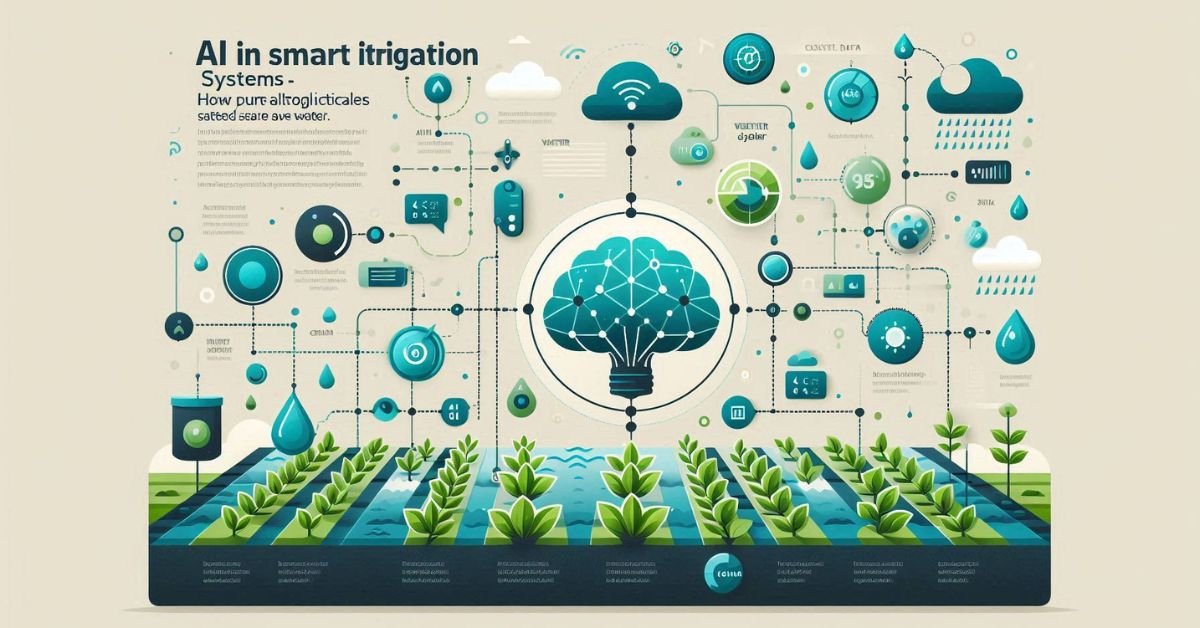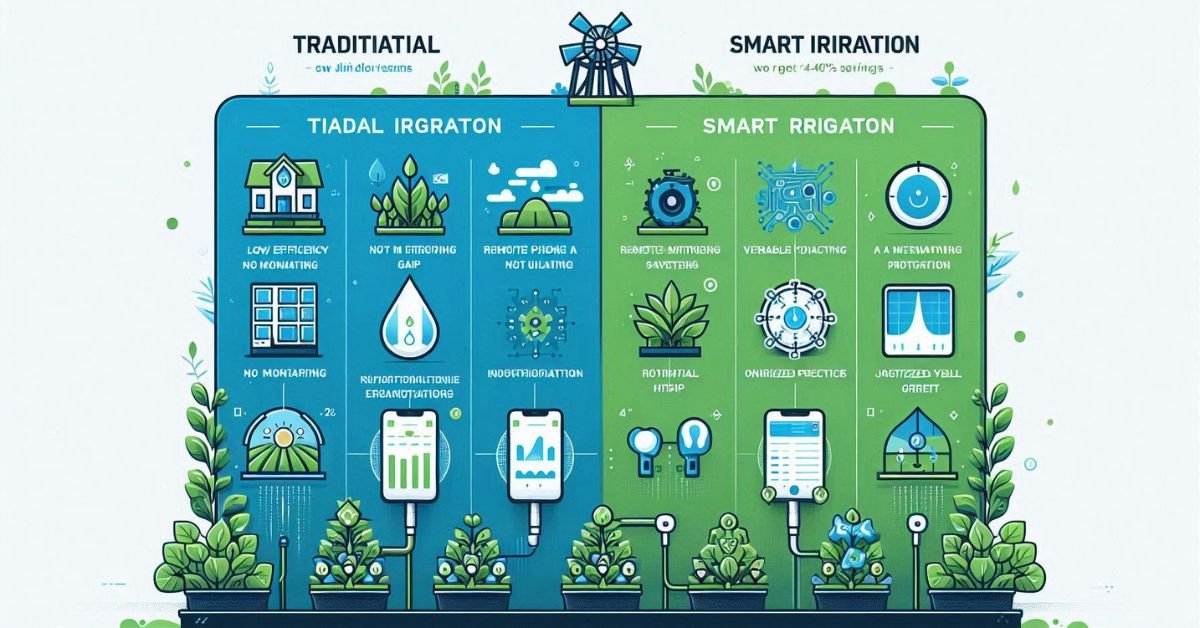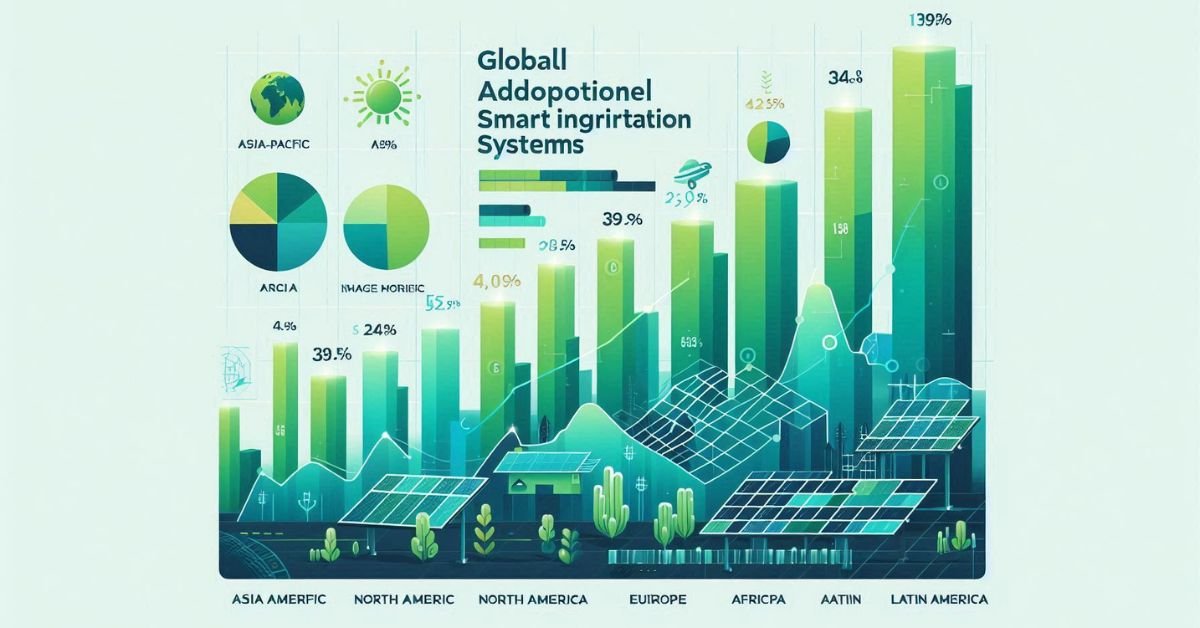Smart irrigation systems are rapidly transforming how the world manages water resources, particularly in agriculture. With water scarcity intensifying and food demand projected to rise by 60% by 2050 (FAO report), the adoption of smart irrigation systems is no longer optional but essential. These intelligent solutions integrate AI, IoT, sensors, and cloud-based platforms to deliver precision watering, reducing waste while boosting crop yields.
In this article, we’ll explore upcoming trends, tools, and industry shifts driving the future of smart irrigation systems, supported by credible data, expert insights, and practical predictions.
Why Smart Irrigation Systems Are the Future
Global urgency: According to the UN, 70% of freshwater use is in agriculture, and inefficient irrigation wastes nearly 50% of this water.
Technology integration: AI-driven smart irrigation systems can cut water use by 20–40% while maintaining yield.
Market growth: The global smart irrigation systems market is expected to reach USD 4.5 billion by 2030 (Allied Market Research, 2023).
👉 Related reading: Explore more in our AI Guides to see how automation is shaping industries.
Key Trends Shaping Smart Irrigation Systems
1. AI-Powered Predictive Irrigation
AI algorithms analyze weather forecasts, soil conditions, and crop requirements to determine the exact water needs of each field. Unlike traditional scheduling, predictive irrigation dynamically adjusts water delivery, improving efficiency.
Example: A John Deere + Microsoft AI pilot program showed predictive irrigation reduced water use by 35%.

2. IoT Sensors and Real-Time Monitoring
Soil moisture sensors, climate nodes, and flow meters enable real-time data collection. IoT-based smart irrigation systems send instant updates to farmers’ smartphones, ensuring timely intervention.
Stat: By 2027, over 600 million IoT devices will be deployed in agriculture (IoT Analytics, 2023).
3. Cloud-Integrated Platforms & Big Data
Cloud computing allows seamless integration of sensor data with machine learning models, enabling farmers to access dashboards anytime, anywhere.
Cloud dashboards track water use per acre, offering compliance-ready sustainability reporting.
Table Suggestion:
| Feature | Traditional Irrigation | Smart Irrigation Systems |
|---|---|---|
| Water Savings | Low | 20–40% |
| Remote Monitoring | No | Yes |
| Predictive Adjustments | None | AI-driven |
| Yield Impact | Variable | Optimized |

4. Autonomous Irrigation Robotics
Drones and autonomous irrigation robots are becoming a reality. Equipped with multispectral cameras and spraying systems, they can assess crop health and deliver water or nutrients precisely where needed.
Case study: Agrobotics in California vineyards reported 15% higher yield with reduced water use.
5. Integration with Renewable Energy
Solar-powered smart irrigation systems are on the rise, especially in regions with limited electricity access. This shift not only reduces carbon footprint but also makes systems more sustainable.

6. Policy Support and Subsidies
Governments are incentivizing adoption. For instance, India’s Pradhan Mantri Krishi Sinchayee Yojana (PMKSY) and US Department of Agriculture (USDA) grants promote smart irrigation system adoption at scale.
Emerging Tools in Smart Irrigation Systems
AI dashboards (IBM Watson, Microsoft Azure AI for Agriculture)
IoT sensor kits (Arable Mark, CropX)
Robotics + drones (DJI Agras, ecoRobotix)
Blockchain-powered water credits for transparent reporting
Digital twins of farms for scenario testing
Industry Shifts & Market Outlook
From reactive to proactive irrigation: Farmers no longer wait for crops to stress—they prevent stress.
Shift toward holistic farm management: Integration with fertilizer and pesticide systems.
Growing demand for ESG compliance: Agribusinesses must showcase sustainable water use.
Market Prediction:
By 2035, 80% of large-scale farms will adopt smart irrigation system, with AI-driven analytics becoming the standard.
Expert Insights & Practical Recommendations
As an R&D-driven sector, smart irrigation system require a balance of affordability, scalability, and ease of use. Key recommendations:
Start small: Farmers should begin with IoT soil moisture sensors and gradually expand.
Leverage subsidies: Tap into regional policies that lower initial investment.
Train workforce: Provide farmers with digital literacy programs for maximum ROI.
Collaborate with tech companies: Partnerships can fast-track AI integration.
FAQs on Smart Irrigation Systems
Q1. What are smart irrigation systems?
Smart irrigation systems are advanced solutions using sensors, AI, and IoT to optimize water use in agriculture.
Q2. How do smart irrigation system save water?
They analyze real-time soil and weather data to deliver only the required water, reducing waste by 20–40%.
Q3. Are smart irrigation systems expensive?
While initial costs are higher, subsidies and long-term water savings make them cost-effective.
Q4. What’s the future of smart irrigation systems?
Expect AI-powered, autonomous, and renewable-energy-integrated systems dominating agriculture by 2035.
Conclusion
The future of smart irrigation systems is not just about technology—it’s about securing water sustainability and agricultural resilience. With AI, IoT, cloud platforms, and robotics reshaping the landscape, farmers and agribusinesses have unprecedented opportunities to save water, improve yields, and meet global food demands.
Actionable Takeaway: Now is the time to invest in smart irrigation system—starting small, scaling strategically, and aligning with global sustainability goals.
👉 Next, explore our Smart Devices section for more insights on connected technologies shaping the future.

Hi, I’m Amarender Akupathni — founder of Amrtech Insights and a tech enthusiast passionate about AI and innovation. With 10+ years in science and R&D, I simplify complex technologies to help others stay ahead in the digital era.
